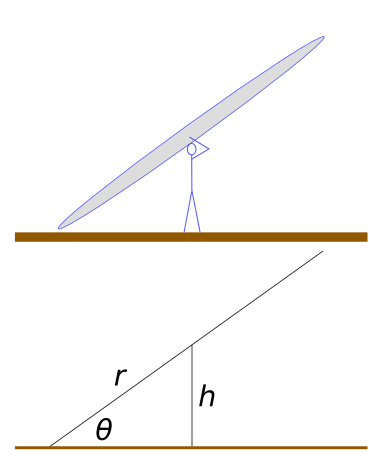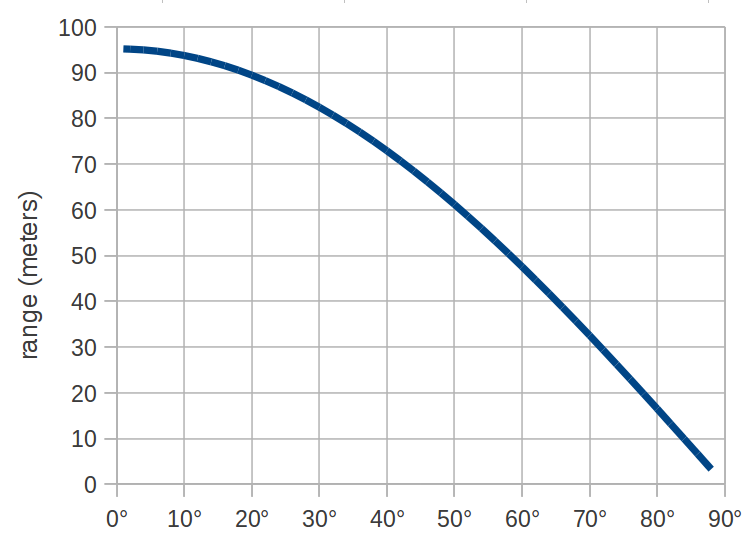
However, if sling length is chosen to be as long as possible, just short of dragging on the ground, then sling length varies with launch angle (assuming helicopter style, on flat ground). With low launch angles, sling length can be much longer. So launch velocities increase with decreasing launch angle.
How does a varying launch velocity affect the optimum launch angle?
Our goal here is to calculate projectile range as a function of launch angle.
We have two different equations for projectile energy: $$ E = {1 \over 2} r F$$ $$ E = { mgd \over 2 sin(2 \theta) } $$

Combine them, and solve for \(d\): $${ mgd \over 2 sin(2 \theta) } = {1 \over 2} r F$$ $$ d = {1 \over 2 g} \cdot {r F \cdot 2 sin(2\theta) \over m}$$ $$ d = {1 \over g} \cdot {r F \cdot sin(2\theta) \over m}$$
The sling length for this launch angle is: $$sin(\theta) = {h \over r}$$ $$r = { h \over sin(\theta) }$$
Where \(h\) is the height of the handle, and \(r\) is the sling length (radius).
Plug that into the distance equation: $$ d = {1 \over g} \cdot {h F \cdot sin(2\theta) \over m d \cdot sin(\theta)}$$
For graphing purposes, we'll arbitrarily choose these parameters:

So the answer to "how long should my sling be?" is "as long as is practical".
$$ \lim_{\theta \to 0} {sin(2\theta) \over sin(\theta)} = 2 $$
So the asymptote (the maximum possible range) is:
$$ d = {1 \over g} \cdot {F \cdot h \over m} \cdot 2 $$
In practical terms, the curve flattens out very near 0°. Which means that if you're struggling to use a 40 foot sling instead of a 30 foot sling, don't worry about it, because the extra 10 feet isn't going to help your range very much.